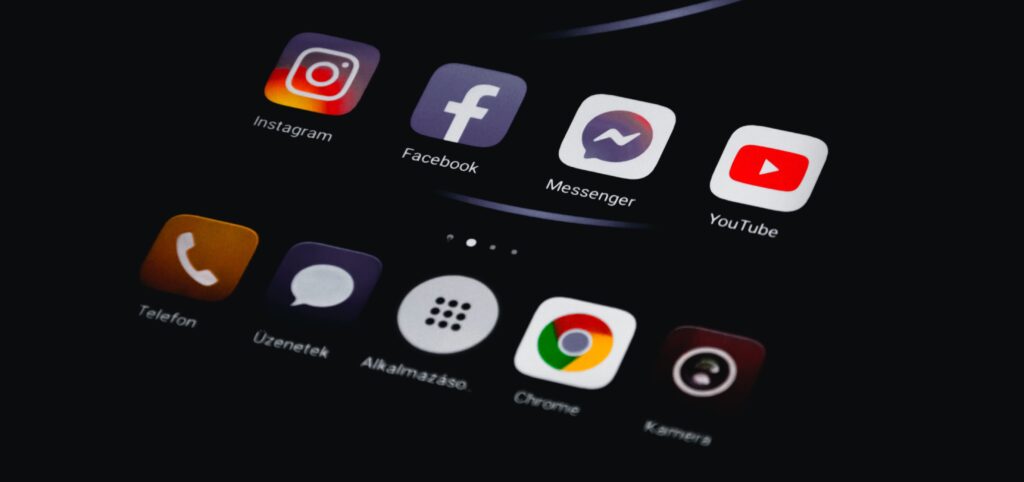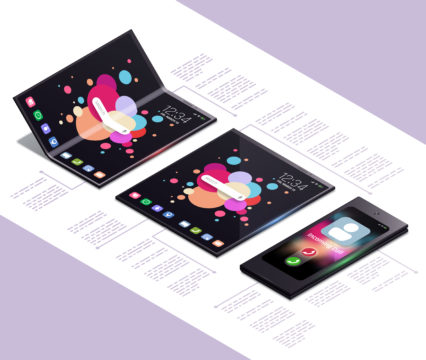
Introduction to Mobile Display
In today’s digital age, mobile devices have become an integral part of our lives. from communication and entertainment to work and Productivity, smartphones have revolutionized the way we interact with the world. one of the essential components of any mobile device is its display. the quality of the mobile display significant impact on smartphone technology. in this article, we will explore the world of mobile displays, their evolution and the technologies that drive them forward.
Understanding mobile Display
A mobile display is the screen on which all the information and visuals are presented. it serves as the interface between the user and the device, mobile displays come in various sizes, resolutions, and technologies, catering to the diverse needs of consumers.
Types of mobile Displays
There are a total 5 types of mobile displays

- LCD
- OLED
- AMOLED
- SUPER AMOLED
- RETINA DISPLAYS
a. LCD (Liquid crystal display)
liquid crystal display. commonly known as LCDs, were one of the early display technologies used in mobile devices. they work by modulating light to create images. LCDs offer good colour reproduction they require a backlight. which can lead to slightly thicker devices.
b. OLED (organic light emitting Diode)
OLED displays have gained popularity due to their ability to produce vibrant colours and deep blacks, unlike LCDs. OLED displays do not require a backlight, resulting in thinner and more energy-efficient devices.
c. AMOLED (Active matrix organic light emitting Diode)
AMOLED display further enhances OLED technology with an active matrix that improves pixel control. this leads to better image quality, higher contrast ratios, and improved power efficiency.
d. Super AMOLED
super Amoled displays developed by Samsung, integrate touch sensors into the display itself, eliminating the need for an additional larger. this design reduces glare and provides a more responsive touch experience.
e. Retina display
Retina display is a term coined by Apple for its high-resolution displays. the term refers to a display where individual pixels are visible to the human eye. resulting in sharp and clear visuals.
Factors Affecting Mobile Display Quality
are the top factors Affecting mobile displays

- Resolution
- Pixel Density
- colour Reproduction
- Contrast Ratio
- Refresh Rate
Resolution – Resolution determines the number of pixels that make up the display. higher resolution offers more detailed and crisp visuals.
Pixel Density – pixel density is the number of pixels per inch of the display. higher pixel density leads to sharper images and smoother text.
Colour Reproduction – Accurate colour reproduction is vital for an immersive viewing experience. displays with wide colour gamuts offer more vibrant and true-to-life colours.
Contrast Ratio – Contrast ratio measures the difference between the brightest and darkest points on the screen. higher contrast ratios result in better differentiation between colours and improved visual depth.
Refresh Rate – refresh rate indicates how many times the display refreshes the image per second. higher refresh rate, such as 90Hz or 120Hz results in smoother animation and reduced motion blur.
The Evolution of Mobile Display
a. FROM monochrome to color screens
mobile displays have come a long way since the early monochrome screens. the introduction of colour display brought a significant improvement to the visual experience.
b. Introduction of touchscreens
The advent of touch screens revolutionized. how we interact with smartphones. capacitive touchscreens enabled more intrusive and responsive gestures.
c. Bazel-less and curved display
Modern smartphones feature bezel-less and curved displays, providing an edge-to-edge viewing experience and a sleek design.
recently apple working on a truly edge-to-edge notch-less iPhone display in talks with LG and Samsung for development. so again it’s going to change the display market.
Mobile display trend

a) Foldable display:- A foldable display offers the flexibility of transforming a smartphone into a table, providing users with enhancement.
b) In-display fingerprint sensors:- in-display fingerprint sensors eliminate the need for a physical fingerprint reader, offering a seamless and secure unblocking experience.
c) High Refresh Rate Display:- High refresh rate displays are becoming increasingly popular among games and content consumers due to their smooth visuals and reduced motion.
d) HDR (High Dynamic Range) technology:- HDR technology enhances the contrast and colour range of display, resulting in a more lifelike viewing experience for HDR-enabled content.
Impact of mobile display on battery life
The display is one of the most power-hungry components of a mobile device. Higher resolution and refresh rates can significantly impact battery life.
However, the constant use of these devices can drain their batteries quickly, leading to frustration and inconvenience. As an SEO expert, we understand the importance of providing valuable content to users while aiming to outrank other websites. In this article, we present a comprehensive guide to optimizing your mobile battery life, ensuring that you can make the most of your device without worrying about frequent recharging.
How to take care of mobile display

a) Use a screen protector:- Applying a screen protector can safeguard the from scratches and minor impact.
b) Adjust screen Brightness:- optimizing screen brightness can extend battery life and reduce eye strain.
c) Clean the display Regularly:- gently cleaning the display with a microfiber cloth helps maintain its clarity.
d) Avoid extreme temperature:- extreme temperature can damage the display. so it’s essential to keep the device within recommended temperature ranges.
conclusion
The impact of mobile displays on battery life is undeniable, but users have the power to make choices that can significantly extend the time between charges. By understanding the factors that influence power consumption, optimizing settings, and making conscious choices about app usage, users can enjoy a better overall experience while ensuring their device stays powered for longer.
FAQs
Does using dark mode on an LCD save battery?
Yes, using dark mode on an LCD can still save battery, though not as much on OLED or AMOLED displays.
Will lowering the screen resolution affect image quality?
Lowering the screen resolution might lead to a slight reduction in image quality, but it is often not noticeable to the average user.
Can I use adaptive brightness on all smartphones?
Most modern smartphones support adaptive brightness, but some budget models might not have this feature.
How can I prevent burn-in on my OLED display?
To prevent burn-in, avoid leaving static images on the screen for extended periods and use the device’s screen timeout effectively.
Do battery-saver modes limit all app functionalities?
Battery-saver modes generally limit background processes and data syncing but do not affect the primary functions of apps.
